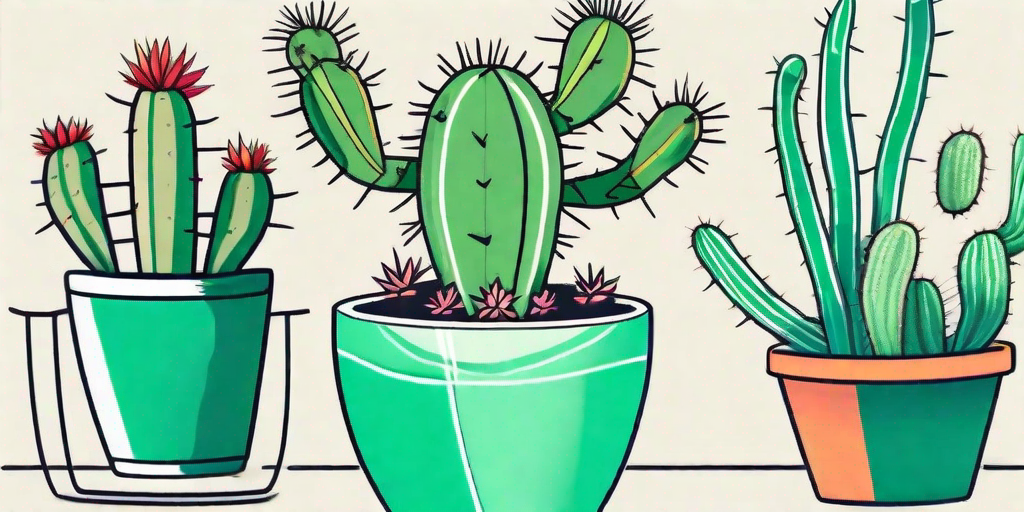
Let's get one thing straight: the Dancing Bones Cactus isn't your average, run-of-the-mill houseplant. This cheeky little number has a personality all its own, and it's ready to shake up your indoor garden game. But don't be fooled by its playful name. This cactus requires a certain level of care and attention to keep it shimmying and shaking in all its glory. So, let's dive in, shall we?
Getting to Know Your Dancing Bones Cactus
What is a Dancing Bones Cactus?
First things first, let's get acquainted with our star of the show. The Dancing Bones Cactus, scientifically known as Rhipsalis capilliformis, is a unique species of cactus native to the rainforests of South America. Unlike its desert-dwelling cousins, this cactus prefers a more tropical setting, making it a perfect addition to your indoor jungle.
Its name, Dancing Bones, comes from its thin, elongated stems that sway and "dance" in the breeze. These stems are green, cylindrical, and segmented, resembling a string of beads or, you guessed it, dancing bones. The plant can grow up to 2 feet tall and 3 feet wide, making it a real showstopper in any room.
What Makes it Unique?
Aside from its quirky name and appearance, the Dancing Bones Cactus has a few other tricks up its sleeve. For starters, it's an epiphyte, which means it naturally grows on other plants or trees, deriving its nutrients from the air, rain, or debris around it. This makes it a great candidate for hanging baskets or pots where it can drape and dance to its heart's content.
Additionally, this cactus is a bit of a night owl. It's a nocturnal bloomer, producing small, white flowers that open at night and close by morning. These flowers are followed by small, red berries that add a pop of color to the plant. So, if you're a fellow night owl, you're in good company with this cactus.
How to Grow and Care for Your Dancing Bones Cactus
Light and Temperature Requirements
Despite its tropical origins, the Dancing Bones Cactus isn't a fan of direct sunlight. Instead, it prefers bright, indirect light. A north or east-facing window is ideal. If you notice the stems turning a reddish color, it may be getting too much light.
As for temperature, this cactus likes it warm. Aim for a temperature range between 60 and 80 degrees Fahrenheit. It can tolerate cooler temperatures down to 50 degrees, but anything below that and your cactus may start to protest.
Watering and Feeding
When it comes to watering, the Dancing Bones Cactus likes to play hard to get. It prefers its soil to dry out completely between waterings. Overwatering can lead to root rot, which is a surefire way to kill the party vibe. A good rule of thumb is to water thoroughly, then wait until the top inch of soil is dry before watering again.
Feeding your cactus is a bit less complicated. During the growing season (spring and summer), feed it with a balanced, water-soluble fertilizer every month. Come fall and winter, you can cut back to feeding every other month.
Common Problems and Solutions
Problem: My Dancing Bones Cactus is Losing its Color
If your cactus is losing its vibrant green color, it may be getting too much sun. Try moving it to a location with more indirect light. If the problem persists, consider using a sheer curtain to filter the light.
Problem: My Dancing Bones Cactus is Wilting
Wilting is often a sign of overwatering. Remember, this cactus likes to dry out between waterings. If the soil feels wet, hold off on watering until it's dry to the touch.
FAQs
Can I Propagate My Dancing Bones Cactus?
Absolutely! Propagation is as easy as taking a cutting, letting it dry for a few days, then planting it in a well-draining soil mix. Before you know it, you'll have a whole troupe of Dancing Bones Cacti!
Is the Dancing Bones Cactus Toxic?
No, the Dancing Bones Cactus is not toxic to humans or pets. However, it's always a good idea to keep plants out of reach of curious pets and children.
How Often Does the Dancing Bones Cactus Bloom?
With proper care, your Dancing Bones Cactus can bloom several times a year, usually in the spring and fall. Remember, the flowers open at night, so keep an eye out!
Wrapping Up
And there you have it, folks! Everything you need to know to keep your Dancing Bones Cactus shaking its groove thing. With a little love and care, this unique plant can bring a touch of whimsy and tropical flair to your home. So, what are you waiting for? It's time to get down with the Dancing Bones Cactus!















